-
 Bitcoin
Bitcoin $107,443.3008
-1.17% -
 Ethereum
Ethereum $2,494.2503
-0.63% -
 Tether USDt
Tether USDt $1.0003
0.00% -
 XRP
XRP $2.2496
2.23% -
 BNB
BNB $658.7569
0.63% -
 Solana
Solana $154.9826
1.94% -
 USDC
USDC $1.0000
0.01% -
 TRON
TRON $0.2799
1.07% -
 Dogecoin
Dogecoin $0.1659
-1.78% -
 Cardano
Cardano $0.5745
0.25% -
 Hyperliquid
Hyperliquid $39.7005
0.13% -
 Bitcoin Cash
Bitcoin Cash $519.5989
3.78% -
 Sui
Sui $2.7874
-2.40% -
 Chainlink
Chainlink $13.3762
-1.69% -
 UNUS SED LEO
UNUS SED LEO $9.0784
-0.64% -
 Avalanche
Avalanche $17.9846
-2.81% -
 Stellar
Stellar $0.2390
-0.06% -
 Toncoin
Toncoin $2.9028
0.25% -
 Shiba Inu
Shiba Inu $0.0...01147
-2.17% -
 Litecoin
Litecoin $86.6956
-1.27% -
 Hedera
Hedera $0.1508
-0.50% -
 Monero
Monero $322.6222
3.26% -
 Polkadot
Polkadot $3.4124
-2.99% -
 Dai
Dai $0.9999
0.00% -
 Bitget Token
Bitget Token $4.5434
-1.97% -
 Ethena USDe
Ethena USDe $1.0002
0.00% -
 Uniswap
Uniswap $7.1562
-2.61% -
 Aave
Aave $275.8830
-1.02% -
 Pepe
Pepe $0.0...09790
-4.04% -
 Pi
Pi $0.5018
-5.09%
Will the difficulty of XMR mining change, how to deal with fluctuations in network computing power?
Monero's mining difficulty adjusts every block using RandomX, ensuring stability despite hash rate fluctuations; miners can adapt by monitoring networks and optimizing hardware.
May 05, 2025 at 03:43 am
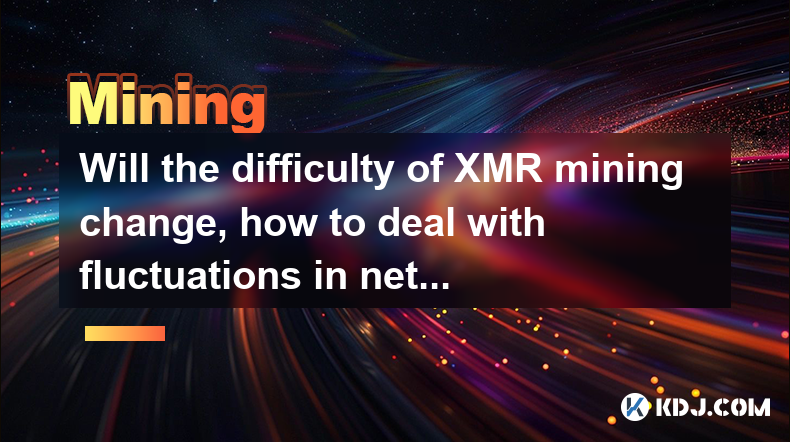
Monero (XMR) is a privacy-focused cryptocurrency that utilizes a proof-of-work (PoW) consensus mechanism. One of the critical aspects of maintaining the network's security and stability is the mining difficulty adjustment. The difficulty of XMR mining is designed to change dynamically to accommodate fluctuations in network computing power. This article will explore how the difficulty of XMR mining changes and provide insights on how miners can effectively deal with these fluctuations.
Understanding XMR Mining Difficulty
The mining difficulty of Monero is a measure of how difficult it is to find a new block. This difficulty is adjusted periodically to ensure that the block time remains consistent, ideally around two minutes. The adjustment is based on the total computational power, or hash rate, of the network. When more miners join the network and increase the hash rate, the difficulty increases to maintain the block time. Conversely, if miners leave and the hash rate decreases, the difficulty decreases.
How XMR Mining Difficulty Changes
Monero uses a unique difficulty adjustment algorithm called RandomX. This algorithm adjusts the difficulty every block, making it more responsive to changes in the network's hash rate compared to other cryptocurrencies that adjust difficulty less frequently. The RandomX algorithm takes into account the time it took to mine the last 720 blocks (approximately 24 hours) to calculate the new difficulty level. This ensures that the network remains stable even when there are sudden changes in hash rate.
Factors Affecting XMR Mining Difficulty
Several factors can influence the difficulty of XMR mining. The most significant factor is the hash rate of the network, which is the total computational power dedicated to mining Monero. Other factors include:
- Adoption and Market Demand: Increased interest in Monero can lead to more miners joining the network, thereby increasing the hash rate and difficulty.
- Technological Advances: Improvements in mining hardware and software can also affect the hash rate and, consequently, the mining difficulty.
- Regulatory Changes: Any regulatory changes that impact the mining industry can influence the number of miners and the overall hash rate.
Strategies for Dealing with Fluctuations in Network Computing Power
Miners need to adapt to changes in network computing power to remain profitable. Here are some strategies to effectively manage these fluctuations:
Monitor Network Hash Rate and Difficulty
- Use Mining Pool Services: Many mining pools provide real-time data on network hash rate and difficulty. Joining a reputable mining pool can help miners stay informed about current conditions.
- Utilize Monitoring Tools: There are various tools and websites that track Monero's network statistics. Regularly checking these resources can help miners anticipate changes in difficulty.
Optimize Mining Hardware and Software
- Upgrade Hardware: Investing in more efficient mining hardware can help miners maintain profitability even when difficulty increases.
- Update Software: Ensuring that mining software is up-to-date can improve performance and efficiency, helping to offset increases in difficulty.
Adjust Mining Operations
- Scale Operations: Miners can scale their operations up or down based on current difficulty levels. When difficulty is low, it may be more profitable to increase mining capacity.
- Diversify Mining Activities: Some miners choose to mine multiple cryptocurrencies to spread risk and take advantage of different difficulty levels across various networks.
Manage Electricity Costs
- Optimize Energy Consumption: Mining consumes a significant amount of electricity. Miners should focus on reducing energy costs through efficient cooling systems and choosing locations with lower electricity rates.
- Consider Renewable Energy: Using renewable energy sources can not only reduce costs but also make mining operations more sustainable.
Practical Steps for Miners to Adapt to Difficulty Changes
To effectively adapt to changes in XMR mining difficulty, miners can follow these practical steps:
- Regularly Review Network Statistics: Use tools like Minergate or Coinwarz to stay updated on the current hash rate and difficulty levels.
- Adjust Mining Strategies: If the difficulty increases significantly, consider reducing mining operations temporarily or switching to another cryptocurrency with lower difficulty.
- Optimize Mining Setup: Ensure that mining rigs are running at optimal performance. This includes regular maintenance, cleaning, and ensuring proper ventilation.
- Join Mining Pools: Joining a mining pool can provide more stable returns, as the pool's collective hash rate can better handle fluctuations in network difficulty.
Case Studies: Real-World Examples of Dealing with Difficulty Fluctuations
To illustrate how miners can deal with difficulty fluctuations, let's look at a few real-world examples:
- Case Study 1: A miner noticed a sudden increase in Monero's difficulty due to a surge in network hash rate. To adapt, the miner temporarily switched to mining another cryptocurrency with lower difficulty until the situation stabilized.
- Case Study 2: Another miner invested in more efficient mining hardware to maintain profitability despite rising difficulty levels. This allowed the miner to continue mining Monero profitably even as the network's hash rate increased.
- Case Study 3: A mining pool adjusted its operations by scaling up during periods of low difficulty and scaling down when difficulty increased. This strategy helped the pool maintain consistent returns for its members.
Frequently Asked Questions
Q: How often does Monero's mining difficulty adjust?
A: Monero's mining difficulty adjusts every block, which is approximately every two minutes. This frequent adjustment helps maintain a stable block time despite fluctuations in network hash rate.
Q: Can I mine Monero profitably with a CPU?
A: Yes, Monero is designed to be CPU-friendly due to its RandomX algorithm. While GPUs and specialized hardware can be more efficient, it is still possible to mine Monero profitably with a CPU, especially if electricity costs are low.
Q: What happens if the network hash rate drops significantly?
A: If the network hash rate drops significantly, the mining difficulty will decrease to maintain the target block time of two minutes. This can make mining more profitable for remaining miners until the hash rate stabilizes.
Q: Are there any risks associated with joining a mining pool?
A: Joining a mining pool can reduce the risk of mining alone, as it provides more consistent returns. However, there are risks such as pool fees, potential downtime, and the possibility of the pool operator engaging in malicious activities. It's essential to choose a reputable and transparent mining pool.
Disclaimer:info@kdj.com
The information provided is not trading advice. kdj.com does not assume any responsibility for any investments made based on the information provided in this article. Cryptocurrencies are highly volatile and it is highly recommended that you invest with caution after thorough research!
If you believe that the content used on this website infringes your copyright, please contact us immediately (info@kdj.com) and we will delete it promptly.
- North Korea's Cyber Plot: Funding Weapons Development Through Virtual Heists
- 2025-07-01 10:30:12
- Undervalued Crypto Tokens: Compute Tokens Stealing the Show?
- 2025-07-01 10:50:12
- XRPL EVM Sidechain: Unleashing Smart Contracts and Cross-Chain DeFi on XRP
- 2025-07-01 10:30:12
- Archaeology Unearths Ancient Coin Moulds: A Glimpse into Indo-Greek Trade in Gujarat
- 2025-07-01 10:50:12
- MAGACOIN FINANCE: Altcoin Returns & the Early Adoption Advantage
- 2025-07-01 11:10:12
- Neo Pepe: Is This Presale the Crypto Opportunity You've Been Waiting For?
- 2025-07-01 11:10:12
Related knowledge
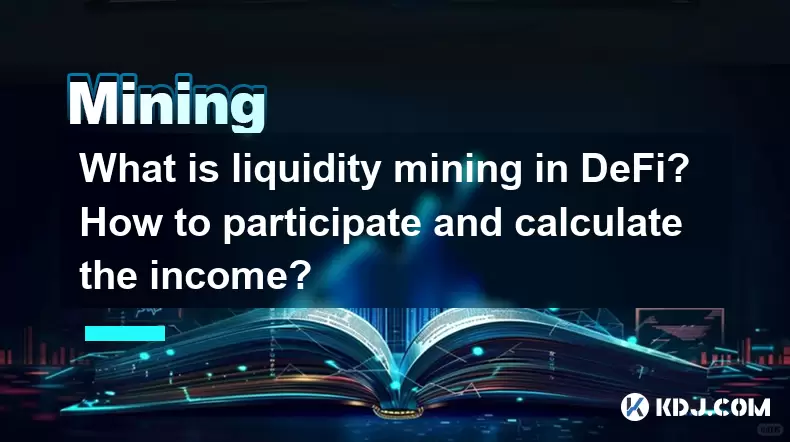
What is liquidity mining in DeFi? How to participate and calculate the income?
Jun 20,2025 at 03:21pm
Understanding Liquidity Mining in DeFiLiquidity mining is a core concept in the decentralized finance (DeFi) ecosystem that allows users to earn rewards by providing liquidity to decentralized exchanges (DEXs) or lending platforms. In traditional finance, liquidity providers are usually institutional players, but DeFi democratizes this process, enabling...
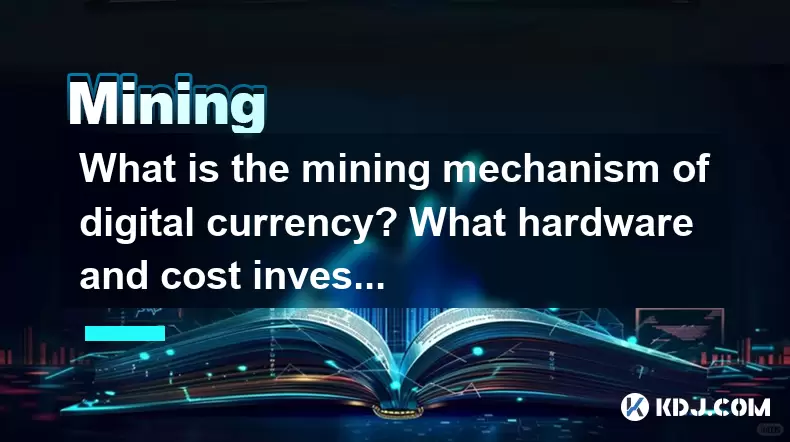
What is the mining mechanism of digital currency? What hardware and cost investment are required?
Jun 23,2025 at 06:29am
Understanding the Mining Mechanism of Digital CurrencyThe mining mechanism of digital currency is a foundational process that ensures transaction validation and network security. In most Proof-of-Work (PoW) cryptocurrencies like Bitcoin, miners compete to solve complex mathematical puzzles using computational power. The first miner to find a valid solut...
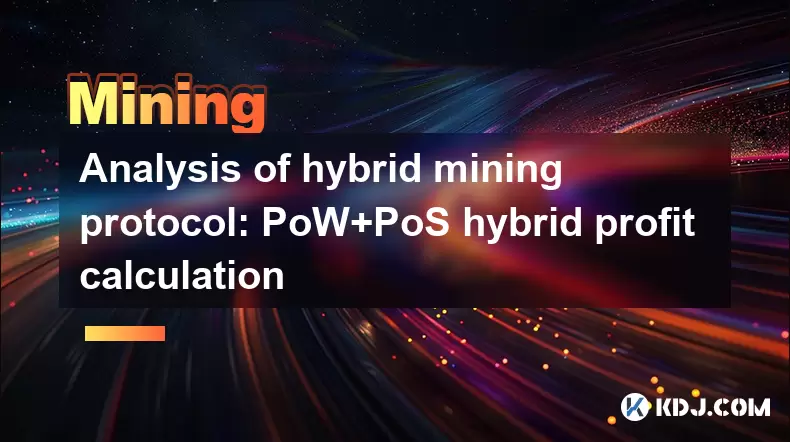
Analysis of hybrid mining protocol: PoW+PoS hybrid profit calculation
Jun 23,2025 at 10:15am
Understanding Hybrid Mining ProtocolsIn the realm of blockchain technology, consensus mechanisms are pivotal in maintaining network integrity and transaction validation. A hybrid mining protocol combines two or more consensus algorithms to achieve a balance between security, decentralization, and energy efficiency. The most commonly adopted hybrid model...
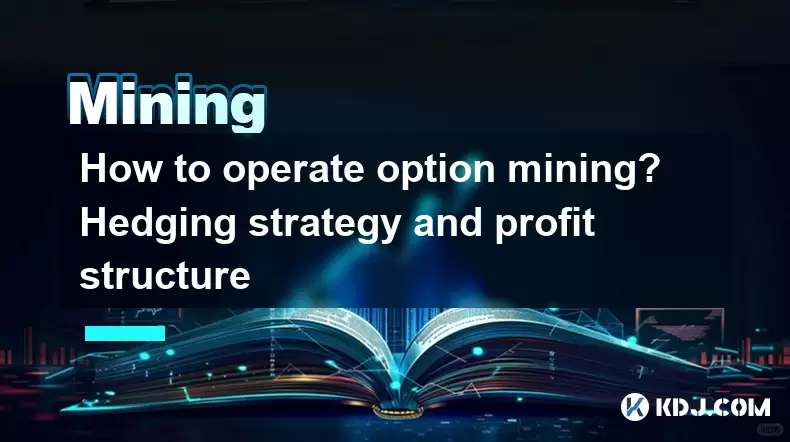
How to operate option mining? Hedging strategy and profit structure
Jun 21,2025 at 03:29pm
What is Option Mining?Option mining refers to a decentralized finance (DeFi) strategy where participants provide liquidity or take specific derivative positions in options protocols to earn rewards. Unlike traditional yield farming, option mining often involves liquidity provision for options markets, allowing users to generate returns through premiums ...
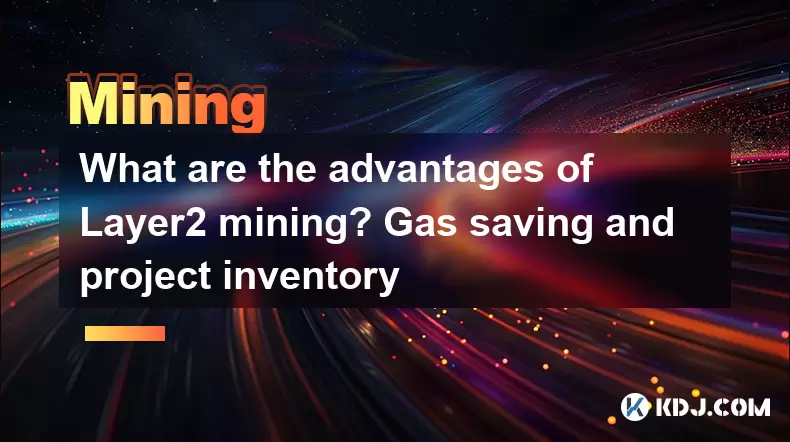
What are the advantages of Layer2 mining? Gas saving and project inventory
Jun 20,2025 at 04:50am
Understanding Layer2 Mining and Its SignificanceLayer2 mining refers to the process of participating in decentralized applications or protocols that operate on top of a primary blockchain (such as Ethereum) using scaling solutions like Optimism, Arbitrum, or zkSync. Unlike traditional mining on Layer1 blockchains, which often involves high computational...

Is contract mining safe? Key points of smart auditing and vulnerability prevention
Jun 19,2025 at 08:08pm
Understanding Contract Mining in the Cryptocurrency SpaceContract mining refers to a method within blockchain ecosystems where users can participate in mining operations through smart contracts. Unlike traditional mining, which requires physical hardware and technical expertise, contract mining allows participants to invest funds into a mining pool or p...

What is liquidity mining in DeFi? How to participate and calculate the income?
Jun 20,2025 at 03:21pm
Understanding Liquidity Mining in DeFiLiquidity mining is a core concept in the decentralized finance (DeFi) ecosystem that allows users to earn rewards by providing liquidity to decentralized exchanges (DEXs) or lending platforms. In traditional finance, liquidity providers are usually institutional players, but DeFi democratizes this process, enabling...

What is the mining mechanism of digital currency? What hardware and cost investment are required?
Jun 23,2025 at 06:29am
Understanding the Mining Mechanism of Digital CurrencyThe mining mechanism of digital currency is a foundational process that ensures transaction validation and network security. In most Proof-of-Work (PoW) cryptocurrencies like Bitcoin, miners compete to solve complex mathematical puzzles using computational power. The first miner to find a valid solut...

Analysis of hybrid mining protocol: PoW+PoS hybrid profit calculation
Jun 23,2025 at 10:15am
Understanding Hybrid Mining ProtocolsIn the realm of blockchain technology, consensus mechanisms are pivotal in maintaining network integrity and transaction validation. A hybrid mining protocol combines two or more consensus algorithms to achieve a balance between security, decentralization, and energy efficiency. The most commonly adopted hybrid model...

How to operate option mining? Hedging strategy and profit structure
Jun 21,2025 at 03:29pm
What is Option Mining?Option mining refers to a decentralized finance (DeFi) strategy where participants provide liquidity or take specific derivative positions in options protocols to earn rewards. Unlike traditional yield farming, option mining often involves liquidity provision for options markets, allowing users to generate returns through premiums ...

What are the advantages of Layer2 mining? Gas saving and project inventory
Jun 20,2025 at 04:50am
Understanding Layer2 Mining and Its SignificanceLayer2 mining refers to the process of participating in decentralized applications or protocols that operate on top of a primary blockchain (such as Ethereum) using scaling solutions like Optimism, Arbitrum, or zkSync. Unlike traditional mining on Layer1 blockchains, which often involves high computational...

Is contract mining safe? Key points of smart auditing and vulnerability prevention
Jun 19,2025 at 08:08pm
Understanding Contract Mining in the Cryptocurrency SpaceContract mining refers to a method within blockchain ecosystems where users can participate in mining operations through smart contracts. Unlike traditional mining, which requires physical hardware and technical expertise, contract mining allows participants to invest funds into a mining pool or p...
See all articles

























































































